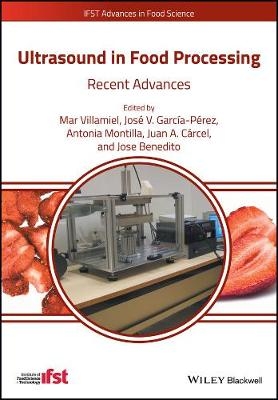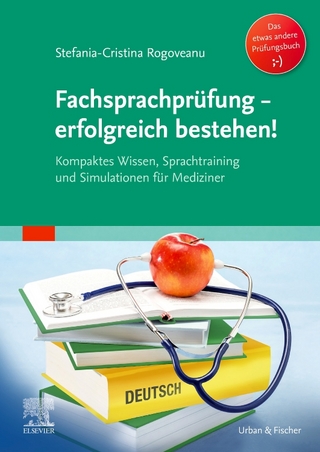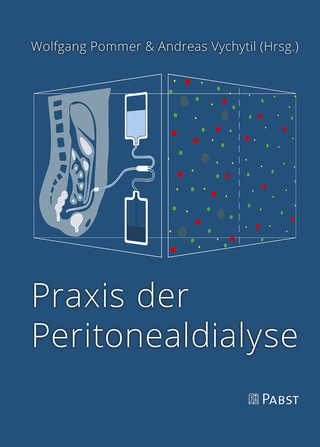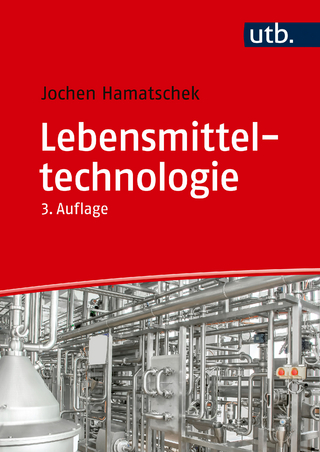
Ultrasound in Food Processing
Wiley-Blackwell (Verlag)
978-1-118-96418-7 (ISBN)
Part I: Fundamentals of ultrasound
This part will cover the main basic principles of ultrasound generation and propagation and those phenomena related to low and high intensity ultrasound applications. The mechanisms involved in food analysis and process monitoring and in food process intensification will be shown.
Part II: Low intensity ultrasound applications
Low intensity ultrasound applications have been used for non-destructive food analysis as well as for process monitoring. Ultrasonic techniques, based on velocity, attenuation or frequency spectrum analysis, may be considered as rapid, simple, portable and suitable for on-line measurements. Although industrial applications of low-intensity ultrasound, such as meat carcass evaluation, have been used in the food industry for decades, this section will cover the most novel applications, which could be considered as highly relevant for future application in the food industry. Chapters addressing this issue will be divided into three subsections: (1) food control, (2) process monitoring, (3) new trends.
Part III: High intensity ultrasound applications
High intensity ultrasound application constitutes a way to intensify many food processes. However, the efficient generation and application of ultrasound is essential to achieving a successful effect. This part of the book will begin with a chapter dealing with the importance of the design of efficient ultrasonic application systems. The medium is essential to achieve efficient transmission, and for that reason the particular challenges of applying ultrasound in different media will be addressed.
The next part of this section constitutes an up-to-date vision of the use of high intensity ultrasound in food processes. The chapters will be divided into four sections, according to the medium in which the ultrasound vibration is transmitted from the transducers to the product being treated. Thus, solid, liquid, supercritical and gas media have been used for ultrasound propagation. Previous books addressing ultrasonic applications in food processing have been based on the process itself, so chapters have been divided in mass and heat transport, microbial inactivation, etc. This new book will propose a revolutionary overview of ultrasonic applications based on (in the authors’ opinion) the most relevant factor affecting the efficiency of ultrasound applications: the medium in which ultrasound is propagated. Depending on the medium, ultrasonic phenomena can be completely different, but it also affects the complexity of the ultrasonic generation, propagation and application.
In addition, the effect of high intensity ultrasound on major components of food, such as proteins, carbohydrates and lipids will be also covered, since this type of information has not been deeply studied in previous books.
Other aspects related to the challenges of food industry to incorporate ultrasound devices will be also considered. This point is also very important since, in the last few years, researchers have made huge efforts to integrate fully automated and efficient ultrasound systems to the food production lines but, in some cases, it was not satisfactory. In this sense, it is necessary to identify and review the main related problems to efficiently produce and transmit ultrasound, scale-up, reduce cost, save energy and guarantee the production of safe, healthy and high added value foods.
About the Editors Mar Villamiel and Antonia Montilla, Department of Bioactivity and Food Analysis, Institute of Food Science Research (CSIC-UAM), Spain José V. García-Pérez, Juan A. Cárcel, and Jose Benedito Analysis and Simulation of Agrofood Processes Group (ASPA), Food Technology Department, Universitat Politècnica de València, Valencia, Spain
About the IFST Advances in Food Science Book Series xvi
List of Contributors xvii
Preface xx
Part 1 Fundamentals of Ultrasound 1
1 Basic Principles of Ultrasound 3
Juan A. Gallego‐Juárez
1.1 Introduction 4
1.2 Generation and Detection of Ultrasonic Waves: Basic Transducer Types 5
1.3 Basic Principles of Ultrasonic Wave Propagation 12
1.4 Basic Principles of Ultrasound Applications 15
1.4.1 Low‐intensity Applications 15
1.4.2 High‐intensity Effects and Applications: Power Ultrasound 18
1.5 Conclusions 23
Acknowledgments 24
References 24
Part 2 Low‐intensity Ultrasound Applications 27
Section 2.1 Food and Process Control 29
2 Ultrasonic Particle Sizing in Emulsions 30
M.J. Holmes and M.J.W. Povey
2.1 Introduction 30
2.2 Definitions: Emulsions and Ultrasound 32
2.3 Theoretical Models of Ultrasound Propagation in Emulsions 35
2.4 Diffraction and Scattering 41
2.5 Multiple Scattering 44
2.6 Mode Conversions 46
2.7 Perturbation Solutions 49
2.8 Two‐particle Models 53
2.9 Practical Particle Sizing Techniques 55
2.10 Conclusion 60
Acknowledgements 60
References 60
3 Ultrasonic Applications in Bakery Products 65
J. Salazar, J.A. Chávez, A. Turó, and M.J. Garcia‐Hernández
3.1 Introduction 65
3.2 Ultrasonic Properties of Materials 67
3.2.1 Ultrasonic Velocity 68
3.2.2 Attenuation 69
3.2.3 Acoustic Impedance 69
3.3 Experimental Set‐up for Ultrasonic Measurements 70
3.3.1 Bread Dough 70
3.3.2 Cake Batter 71
3.4 Experimental Results and Discussion 71
3.4.1 Wheat Dough 72
3.4.2 Rice Dough 78
3.4.3 Cake Batter 81
3.5 Discussion and Conclusion 82
References 82
4 Characterization of Pork Meat Products using Ultrasound 86
J.V. Garcia‐Pérez, M. De Prados, and J. Benedito
4.1 Introduction 86
4.2 Ultrasonic Measurements: Devices and Parameters 89
4.3 Assessment of Fat Properties 91
4.3.1 Influence of Temperature on Ultrasonic Velocity 91
4.3.2 Classification of Meat Products by means of their Fat Melting/ Crystallization Behavior 92
4.3.3 Monitoring of Fat Melting/Crystallization 97
4.4 Composition Assessment 101
4.5 Textural Properties 104
4.6 New Trends 108
Acknowledgements 110
References 110
5 The Application of Ultrasonics for Oil Characterization 115
P. Kiełczyński
5.1 Introduction 116
5.1.1 Classical Methods for the Investigation of Physicochemical Parameters of Oils and Liquid Foodstuffs 117
5.1.2 Ultrasonic Methods 117
5.1.3 High‐pressure Physicochemical Properties of Oils 120
5.2 Physicochemical Parameters of Liquids (Oils) that can be Evaluated by means of Ultrasonic Methods 121
5.2.1 Ultrasonic Wave Velocity and Density Measurement 121
5.2.2 Measurement of Sound Velocity, Density, and Liquid Viscosity 124
5.3 Ultrasonic Measurements 125
5.3.1 Sound Velocity 125
5.3.2 Viscosity 128
5.3.3 Attenuation 129
5.4 Measurements of Selected Physicochemical Parameters of Oils at Elevated Pressures and Various Values of Temperature 130
5.4.1 Sound Velocity 131
5.4.2 Density 131
5.4.3 Numerical Approximation of Density and Sound Velocity 131
5.4.4 Adiabatic Compressibility 132
5.4.5 Isothermal Compressibility 133
5.4.6 Isobaric Thermal Expansion Coefficient 134
5.4.7 Specific Heat Capacity 134
5.4.8 Surface Tension 134
5.4.9 Investigation of High‐pressure Phase Transitions in Oils by Ultrasonic Methods 135
5.5 Conclusions 138
List of Symbols 139
References 141
6 Bioprocess Monitoring using Low‐intensity Ultrasound: Measuring Transformations in Liquid Compositions 146
L. Elvira, P. Resa, P. Castro, S. Kant Shukla, C. Sierra, C. Aparicio, C. Durán, and F. Montero de Espinosa
6.1 Introduction 147
6.2 Physical Models for Bioprocess‐related Media 149
6.2.1 Modelling the Medium 149
6.2.2 Modelling the Bioprocess: Obtaining Information about the Medium Composition 154
6.3 Ultrasonic Measurement Techniques for Bioprocess Monitoring and Instrumentation 156
6.3.1 Measurement Based on Pulsed‐wave Techniques 156
6.3.2 Measurement Based on Resonance Techniques 158
6.3.3 Control of External Conditions: Temperature and Pressure 161
6.4 Applications of Ultrasonic Technologies to Bioprocess Monitoring 161
6.4.1 Enzymatic Processes 161
6.4.2 Fermentative Processes 165
6.4.3 Microbial Growth 168
References 171
Section 2.2 New Trends in Ultrasonic Non‐destructive Testing 175
7 Air‐coupled Ultrasonic Transducers 176
T.E. Gomez Alvarez‐Arenas
7.1 Introduction 177
7.1.1 Low‐frequency (<60 kHz), High‐power Transducers 177
7.1.2 Low to Medium Frequency (<120 kHz), Relatively Low‐power Transducers 177
7.1.3 High‐frequency (>100 kHz), Relatively Low‐power Transducers 178
7.2 High‐frequency Transduction Technologies 178
7.2.1 Capacitive Transducers 179
7.2.2 Piezoelectric Transducers 179
7.2.3 Ferroelectret Polymer Film Transducers 182
7.3 Uses and Applications of High‐frequency (>100 kHz) Ultrasonic Air‐coupled Transducers 183
7.4 Design Criteria for High‐frequency Air‐coupled Transducers 187
7.4.1 Requirements Imposed by the Sample Insertion Loss 187
7.4.2 Main Design Parameters 191
7.5 Design of Wideband and High‐frequency (>100 kHz) Air‐coupled Piezoelectric Transducers 196
7.5.1 Materials Selection 196
7.5.2 The Ideal Piezoelectric Air‐coupled Transducer 200
7.5.3 The Realistic Piezoelectric Air‐coupled Transducer 201
7.5.4 Why can Piezoelectric Transducers not be Designed Following the Optimum Design? 206
7.5.5 Realistic Alternatives for the Design of Air‐coupled Piezoelectric Transducers 207
7.5.6 Optimization under Realistic Constraints: The ML Detuning Technique 209
7.6 High‐frequency and Wideband Piezoelectric Transducers: Realizations in the Frequency Range 0.20–2.0 MHz 213
7.7 Focusing Techniques 216
7.7.1 Geometrically Focused Transducer Aperture 217
7.7.2 Fresnel Zone Plates 217
7.7.3 Off‐axis Parabolic Mirror 218
References 218
8 Acoustic Microscopy 229
N.J. Watson, M.J.W. Povey, and N.G. Parker
8.1 Introduction 230
8.2 Acoustic Microscope Theory 231
8.3 Acoustic Contrast 232
8.4 Focusing 233
8.5 Spatial Resolution 235
8.6 Temperature Effects 237
8.7 Generation of an Acoustic Image 238
8.8 Components and Operation of an Acoustic Microscope 238
8.8.1 Transducer 238
8.8.2 Sample Unit 242
8.8.3 Positioning System 244
8.8.4 Pulser and Receiver 244
8.8.5 Control Software 244
8.8.6 Sample Preparation and Operating Considerations 244
8.9 Combination of Acoustic Microscopy with other Techniques 245
8.10 Uses of Acoustic Microscopes in the Food Industry 245
8.11 Future Trends for Acoustic Microscopes in the Food Industry 249
8.11.1 Reduced Scanning Time 250
8.11.2 Easier Sample Preparation 250
8.11.3 Non‐immersion Operation 250
8.11.4 Non‐contact Scanning 250
8.12 Additional Resources 250
Acknowledgements 250
References 251
Part 3 High‐intensity Ultrasound Applications 255
Section 3.1 Ultrasound Applications in Liquid Systems 257
9 The Use of Ultrasound for the Inactivation of Microorganisms and Enzymes 258
Cristina Arroyo and James G. Lyng
9.1 Introduction 259
9.2 Microbial Inactivation by Ultrasound 259
9.2.1 A Hint of History 259
9.2.2 Mode of Action and Structural Studies 260
9.2.3 Kinetics of Inactivation 264
9.2.4 Factors Affecting the Lethal Effect of Ultrasound 264
9.2.5 Ultrasound in Combination with other Hurdles 272
9.3 Enzyme Inactivation by Ultrasound 272
9.3.1 Alkaline Phosphatase (EC Number 3.1.3.1) 273
9.3.2 Lactoperoxidase (EC Number 1.11.1.7) 274
9.3.3 Lipase (EC number 3.1.1.3) 274
9.3.4 Lipoxygenase (EC Number 1.13.11.12) 275
9.3.5 Pectin Methylesterase (EC Number 3.1.1.11) 275
9.3.6 Peroxidases (EC Number 1.11.1.7) 276
9.3.7 Polyphenol Oxidases (EC Number 1.14.18.1) 277
9.3.8 Proteases 277
9.4 Conclusions and Future Trends 278
References 278
10 Ultrasonic Preparation of Food Emulsions 287
A. Shanmugam and M. Ashokkumar
10.1 Introduction 287
10.2 Formation of Emulsions 288
10.3 Conventional Emulsification Techniques 290
10.4 Ultrasonic Emulsification 292
10.5 Factors Affecting Sono‐emulsification 293
10.5.1 Sonication Frequency 293
10.5.2 Sonication Power 294
10.5.3 Solution Temperature 295
10.5.4 Sonication Time 295
10.6 Role of Food Additives during Emulsification 295
10.6.1 Emulsifiers 295
10.6.2 Stabilizers 296
10.7 Case Studies on Ultrasonic Emulsification 297
10.8 Advantages of US over Other Emulsification Techniques 302
10.9 Conclusions 306
References 306
11 Osmotic Dehydration and Blanching: Ultrasonic Pre‐treatments 311
Fabiano A.N. Fernandes and Sueli Rodrigues
11.1 Introduction 312
11.2 Fundamentals 312
11.3 Tissue Structure 315
11.4 Pre‐treatment Equipments 315
11.5 Mass Balances 315
11.5.1 Fick’s Law 315
11.5.2 Mass Transfer Model 317
11.5.3 Correlations 318
11.5.4 Water Loss and Sugar Gain 318
11.6 Osmotic Solutes 319
11.6.1 Binary Solutions 319
11.6.2 Ternary Solutions 320
11.7 Operating Conditions 320
11.7.1 Ultrasound Frequency 320
11.7.2 Osmotic Solution Concentration 321
11.7.3 Temperature 321
11.7.4 Immersion Time 321
11.8 Preservation 321
11.9 Quality Aspects 322
11.9.1 Vitamin C Content 322
11.9.2 Phenolics and Carotenoid Content 323
11.9.3 Sensory Evaluation 323
11.9.4 Color 323
11.9.5 Mechanical Behavior 324
References 325
12 Ultrasonically Assisted Extraction in Food Processing and the Challenges of Integrating Ultrasound into the Food Industry 329
T.J. Mason and M. Vinatoru
12.1 General Introduction 330
12.2 Extraction Methods for Food Technology 331
12.2.1 Conventional Methods 331
12.2.2 Non‐conventional Methods 331
12.2.3 Ultrasonically Assisted Extraction 332
12.2.4 Conclusions 341
12.3 The Challenges of Integrating Ultrasound in the Food Industry 341
12.3.1 The Scale‐up of Liquid Processing 343
12.4 Concluding Remarks 349
References 350
Section 3.2 Ultrasound Applications in Gas and Supercritical Fluids Systems 354
13 Ultrasonic Levitation Technologies 355
K. Nakamura
13.1 Introduction 355
13.2 Near‐field Acoustic Levitation of a Planer Object 356
13.2.1 Overview of Near‐field Acoustic Levitation 356
13.2.2 Model of Levitation 357
13.2.3 Levitation of Large Plate 359
13.3 Non‐contact Transport of a Glass Plate 360
13.3.1 Combination with a Motorized Stage 360
13.3.2 Horizontal Force 360
13.3.3 Non‐contact Transport Utilizing Traveling Wave Vibrations 361
13.3.4 Large‐scale Transporter 363
13.4 Levitation of Droplets in Standing Wave Field in Air 364
13.5 Non‐contact Manipulation of a Small Particle or Droplet in Air 366
13.5.1 High‐speed Transport of Particle/Droplet 366
13.5.2 Step‐by‐step Transport 367
13.5.3 Contactless Mixing of Two Droplets 368
13.6 Summary 369
References 369
14 Ultrasonically Assisted Drying 371
J.A. Cárcel, J.V. Garcia‐Pérez, E. Riera, C. Rosselló, and A. Mulet
14.1 Introduction 372
14.2 Why Ultrasound can Intensify Drying Processes 373
14.3 Application of Ultrasound in Gas Media 373
14.4 Influence of Process Variables on the Ultrasonically Assisted Drying Rate 375
14.4.1 Drying Temperature 375
14.4.2 Air Velocity 376
14.4.3 Applied Ultrasonic Power 377
14.4.4 Product Structure 378
14.5 Influence of Ultrasound Application on the Quality of Dried Products 380
14.5.1 Microstructure 380
14.5.2 Physical Properties of Dried Materials 383
14.5.3 Chemical Composition 384
14.6 Main Conclusions and Research Trends 388
Acknowledgements 388
References 388
15 Microbial and Enzyme Inactivation by Ultrasound‐assisted Supercritical Fluids 392
C. Ortuño and J. Benedito
15.1 Introduction 393
15.2 Microbial and Enzyme Inactivation by High‐power Ultrasound 393
15.3 Microbial and Enzyme Inactivation by Supercritical Carbon Dioxide 394
15.3.1 Microbial Inactivation Mechanisms by SC‐CO2 394
15.3.2 Factors Affecting SC‐CO2 Microbial Inactivation 396
15.3.3 Mechanisms and Factors in the SC‐CO2 Enzyme Inactivation 399
15.4 Combination of HPU and SC‐CO2 for Microbial/Enzyme Inactivation 400
15.4.1 Synergistic Effect of HPU in the SC‐CO2 Inactivation Process 400
15.4.2 Effect of Temperature, Pressure, and Culture Media on SC‐CO2+HPU Treatments 402
15.4.4 Effect of the Type of Microorganism/Enzyme 411
15.5 Conclusions 412
15.6 Recommendations 412
Acknowledgements 413
References 413
Section 3.3 Effect of Ultrasound on Food Constituents 417
16 Impact of High‐intensity Ultrasound on Protein Structure and Functionality during Food Processing 418
M. Corzo‐Martínez, M. Villamiel, and F. Javier Moreno
16.1 Introduction 418
16.2 Effect of High‐intensity Ultrasound on Protein Structure and the Physicochemical Properties of Food Proteins 420
16.3 Effect of High‐intensity Ultrasound on the Technological Properties of Food Proteins 423
16.4 Effect of High‐intensity Ultrasound on Protein Glycation by the Maillard Reaction 426
16.5 Effect of High‐intensity Ultrasound on the Biological Properties of Food Proteins 428
16.6 Conclusions and Future Trends 430
Acknowledgements 431
References 431
17 Ultrasound Effects on Processes and Reactions Involving Carbohydrates 437
A.C. Soria, M. Villamiel, and A. Montilla
17.1 Introduction 438
17.2 Sonophysical Effects 439
17.2.1 Depolymerization 439
17.2.2 Effects of Ultrasound on Functional Properties of Carbohydrates 441
17.2.3 Use of Ultrasound in Carbohydrate Chemistry 443
17.2.4 Crystallization 444
17.3 Sonochemical Effects on Carbohydrate Depolymerization 446
17.4 Effects of Ultrasound on Biotechnological Processes 448
17.4.1 Depolymerization 449
17.4.2 Other Bioprocesses 453
17.5 Conclusions and Future Trends 457
Acknowledgements 458
References 458
18 Effect of Ultrasound on the Physicochemical Properties of Lipids 464
S. Martini
18.1 Introduction 464
18.2 Background 465
18.2.1 Definition of Ultrasound 465
18.2.2 Mechanism of Action of HIU 466
18.3 Modifying the Physical Properties of Lipids with HIU 467
18.3.1 Effect on the Induction Times of Crystallization 468
18.3.2 Effect on Microstructure 468
18.3.3 Effect on Solid Fat Content 472
18.3.4 Effect on Texture and Viscoelasticity 474
18.3.5 Effect on Melting Profile 475
18.3.6 Effect on Polymorphism 476
18.3.7 Effect on Phase Separation 477
18.3.8 Combination with Other Process Variables 477
18.3.9 Effect on Oxidation 478
18.3.10 Use of HIU in a Flow Cell 480
18.4 Concluding Remarks and Future Research 480
Acknowledgments 482
References 482
19 Effect of Ultrasound on Anthocyanins 485
J.A. Moses, G. Rajauria, and B.K. Tiwari
19.1 Introduction 485
19.2 Anthocyanins: Chemistry and Sources 489
19.3 Degradation of Anthocyanins 490
19.4 Ultrasound‐assisted Extraction and Processing of Anthocyanins 491
19.5 Effect of Sonication on Anthocyanins 492
19.6 Mechanism of Anthocyanin Degradation 494
19.7 Kinetics of Anthocyanin Degradation 496
19.8 Conclusions 498
References 499
Epilogue 506
Index 508
| Erscheinungsdatum | 07.05.2017 |
|---|---|
| Reihe/Serie | IFST Advances in Food Science |
| Verlagsort | Hoboken |
| Sprache | englisch |
| Maße | 173 x 246 mm |
| Gewicht | 1089 g |
| Themenwelt | Medizin / Pharmazie ► Medizinische Fachgebiete |
| Technik ► Lebensmitteltechnologie | |
| ISBN-10 | 1-118-96418-7 / 1118964187 |
| ISBN-13 | 978-1-118-96418-7 / 9781118964187 |
| Zustand | Neuware |
| Haben Sie eine Frage zum Produkt? |
aus dem Bereich


